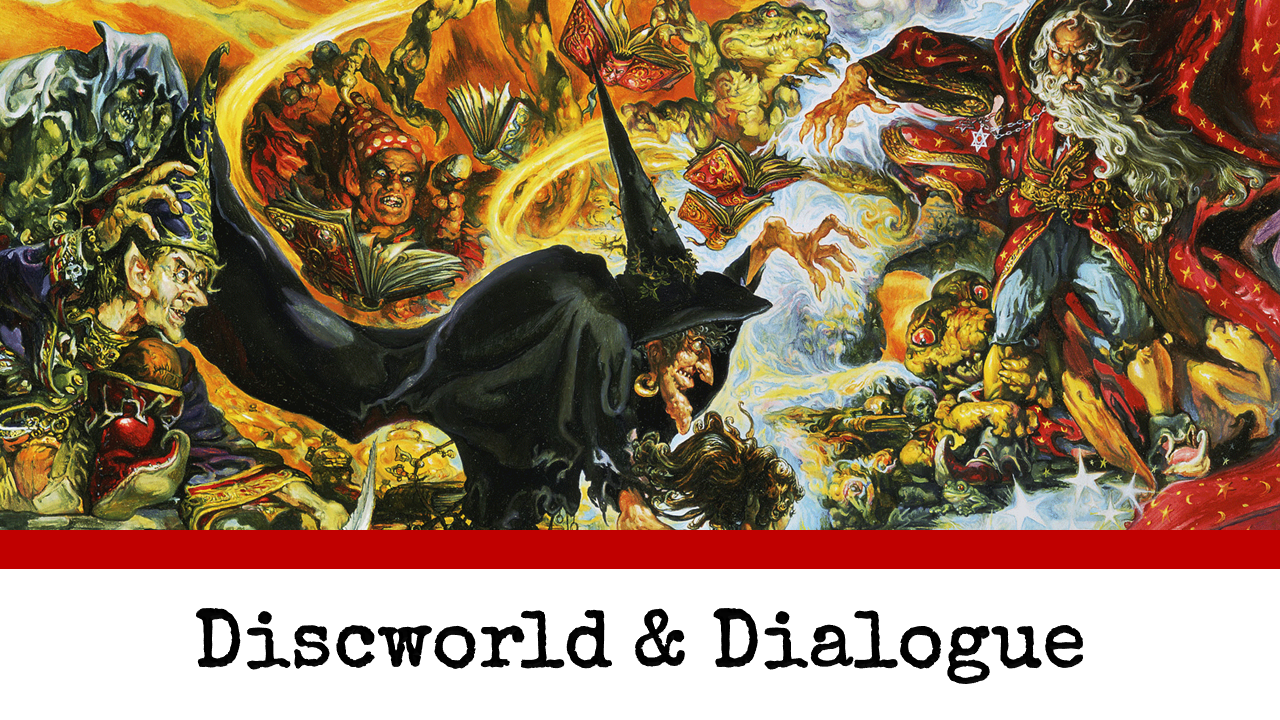I’ve been reading my eldest girls Terry Pratchett’s books for a while now, starting from The Colour of Magic and most recently about to finish Moving Pictures. While some of the jokes are a little dated, my girls have loved every minute of it, and already have their favourite characters to barrack for (namely Death and the Librarian).
You may have read my earlier article on reading my girls Lord of the Rings. It really is a different experience reading a story to someone. For starters, you have to give each voice a little twang, or accent, or rhythm, to try and help make sense of it all. I remember one of my early lessons in writing was to avoid overloading a conversation with too many voices, lest the narrative become too confusing.
I’ve never had this problem reading the Discworld books. Pratchett manages to have scenes of three, four or even five characters all arguing, joking or threatening each other, and I’ve never once had to stop and explain who is saying what. So, what is Pratchett’s recipe for success?
For starters, each character has a clear voice. The rhythm and dialect of each created figure is unique, from the single word “Ook!” of the Librarian to the cockney slang of Corporal Nobby Nobbs, to the pompous eloquence of the Unseen University Wizards, to the folksy tones of Nanny Ogg – every character great and small has enough identifiers to immediately place them within a conversation.
Secondly, every line reveals character. Pratchett makes every piece of dialogue work double time, not just informing the reader of what the character’s opinion but also their personal history and worldview. Twoflower’s relentlessly optimistic view of the world, Death’s yearning to understand humanity, Sam Vimes’s ground-in cynicism; Pratchett never lets a single word go to waste.
Finally, when characters talk, they are not all having the same conversation. This to me is the mark of a great writer. There is no shared hivemind where all the characters perfectly understand each other to move to the next plot event. Instead, each character is following their own point of view, arguing, misunderstanding, or even completely ignoring the other characters in the conversation. One of my favourites is the Elucidated Brethren of the Ebon Night from Guards! Guards!, where half the peevish, petulant cultists are talking as if they were the only speaker in the room, barely responding to each other but just spitting out their own hilarious, small-minded grudges.
I’m not sure if I’m going to end up reading my girls every single Discworld book. I hope so, but one day they will likely want to read them on their own. In the meantime though, Granny Weatherwax’s scratchy old-woman voice or Cut-Me-Own-Throat Dibbler’s manic sales pitches are one of the quiet pleasures of my life.
In related – and bittersweet – news, I’ve recently found out that Sir Terry’s daughter, Rhianna, will be producing the next Discworld book, featuring the young witch Tiffany Aching. This will be the final official Discworld story, but Rhianna has made it clear that Pratchett’s legacy will always be his own. I couldn’t agree more.

Leave a Reply